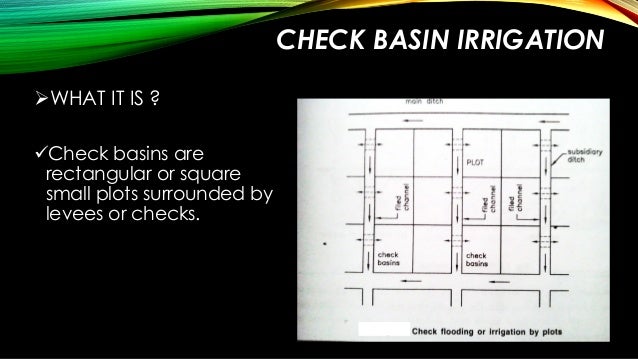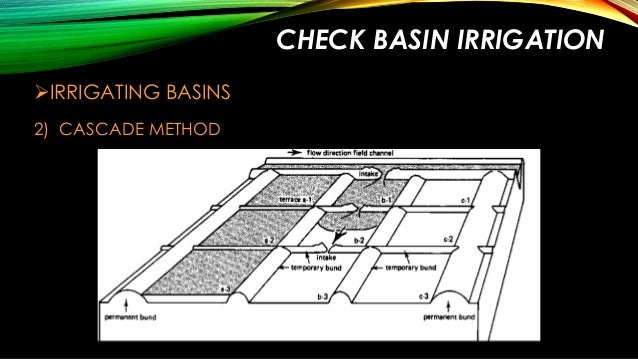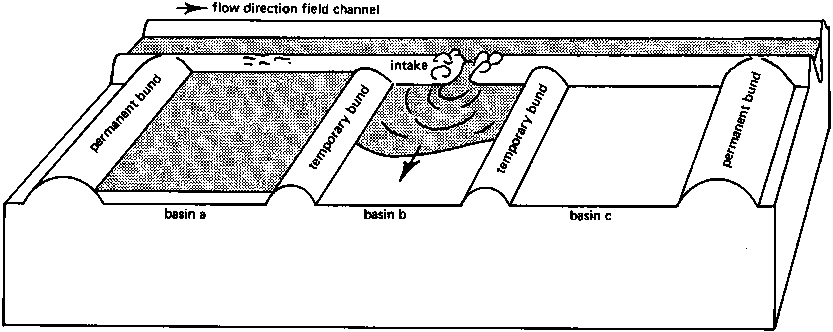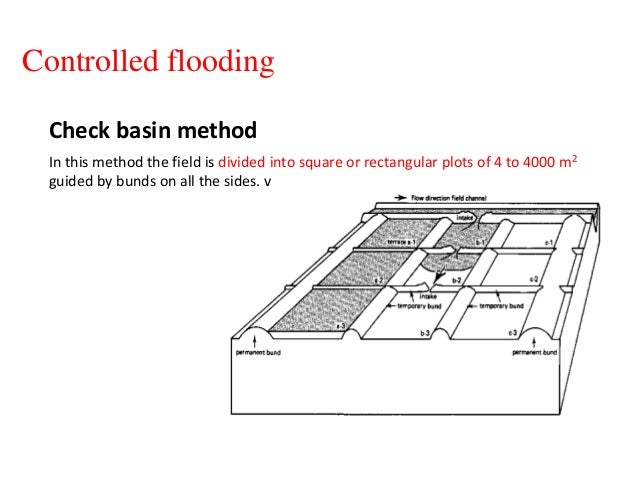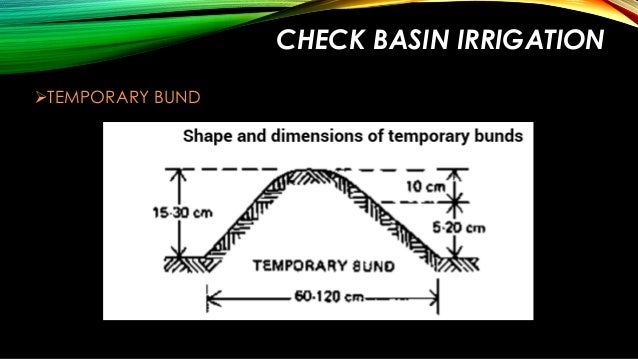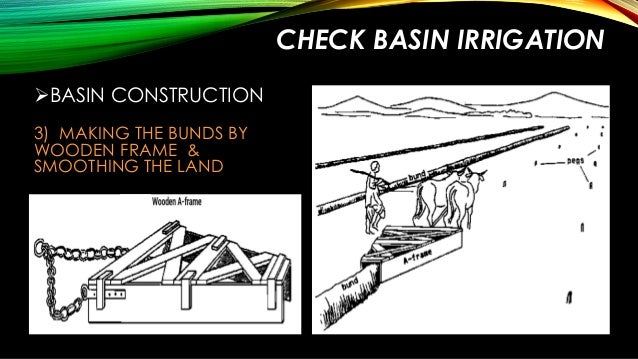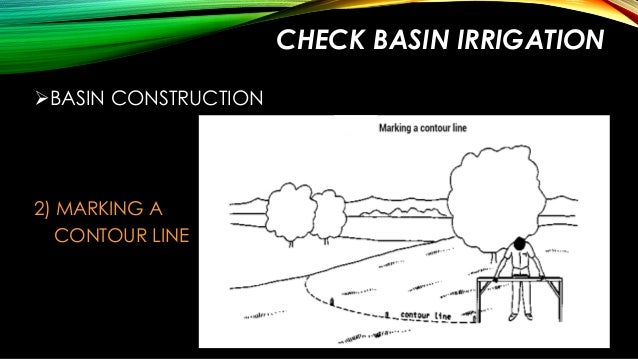Diagram Of Check Basin Irrigation

Spacing of furrows may be from 1 to 2 meters apart in case of orchard irrigation.
Diagram of check basin irrigation. Early learned the technique of basin irrigation ponding back the floodwater for as long as possible after the river had receded so that enriched soil could bring forth a harvest before the floods of the following season. Testing your rain sensor for proper operation is an integral part of your irrigation system to conserve water and your costs. The advance phase refers to that length of time as water is applied to the top end of the field and flows or advances over the field length. The two main types are cork disk and catch basin types.
Border irrigation can be viewed as an extension of basin irrigation to sloping long rectangular or contoured field shapes with free draining conditions at the lower end. Levelling of basins also required at regular time. In this method the whole field is divided into basins according to the capacity of water. The shape and size of basins are mainly determined by the land slope the soil type the available stream size the water flow to the basin the required depth of the irrigation application and farming practices.
Check basin irrigation maintenance of basins erosion control is made which may be caused by rainfallflooding or the passing of people when used as footpaths rats may dig holes in the sides of the bunds. I check basin method. Basins are connected through a dhora a small drain type flow way which has raised earthen walls on both sides. 5 furrow irrigation method.
Depth of deep furrows may vary from 20 to 30 cm. Other articles where basin system is discussed. Cork disk types expand with moisture to turn off the watering cycles and catch basins operate by the water weight or electrode position to delay an irrigation cycle. One or more trees are generally placed in the basin and the surface is flooded as in check method by ditch water as shown in fig.
17modes of application 1 18. The process of surface irrigation can be described using four phases. When furrows are 8 to 12 cm deep they are called corrugations or shallow furrows. As water is applied to the top end of the field it will flow or advance over the field length.
The advantage of deep furrow is that in initial stages the roots are not damaged. In the tigris euphrates valley the irrigation problem was more complex because the. Introduction to surface irrigation system the term surface irrigation refers to a broad class of irrigation methods in which water is distributed over the field by overland flow.
